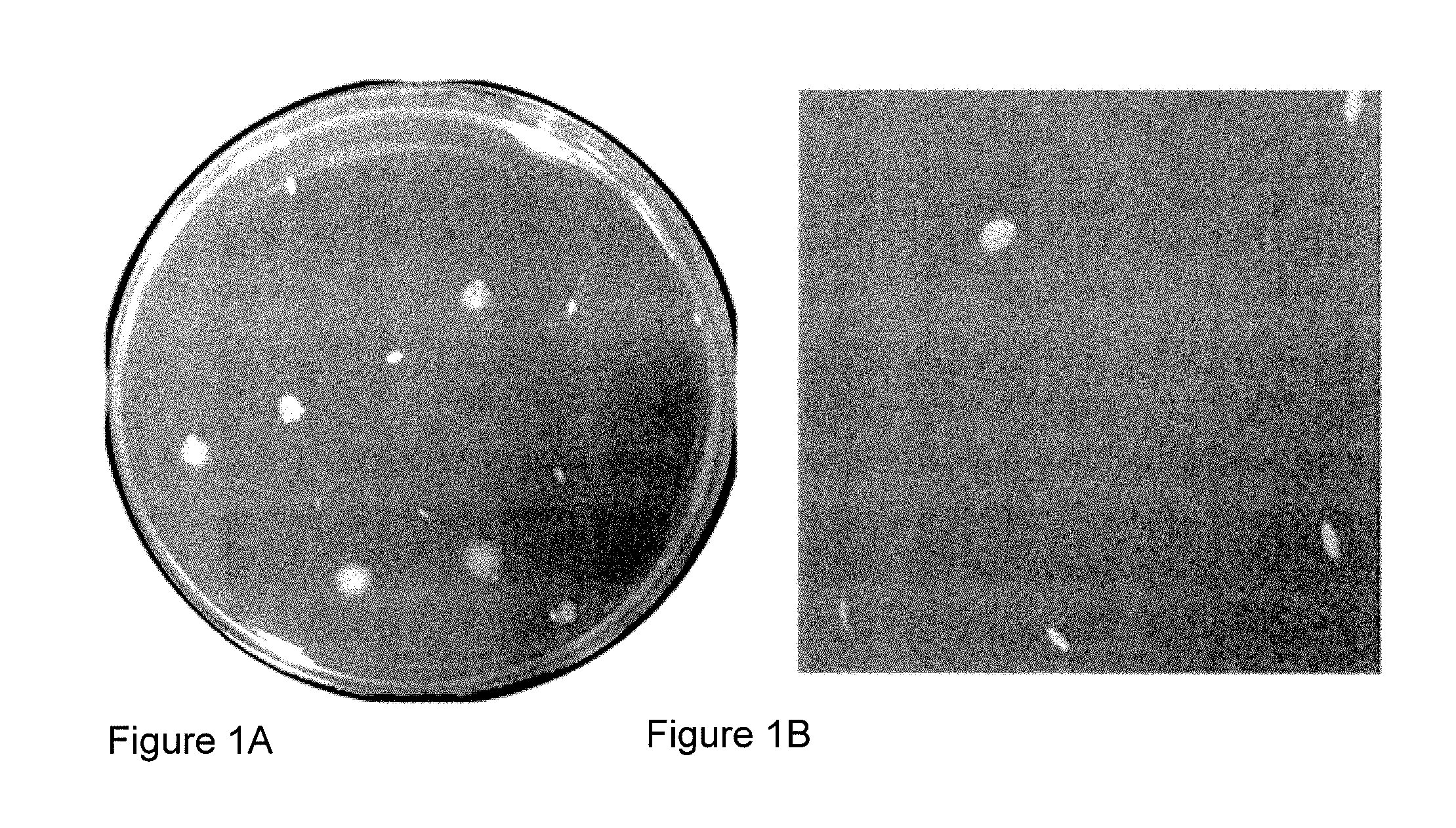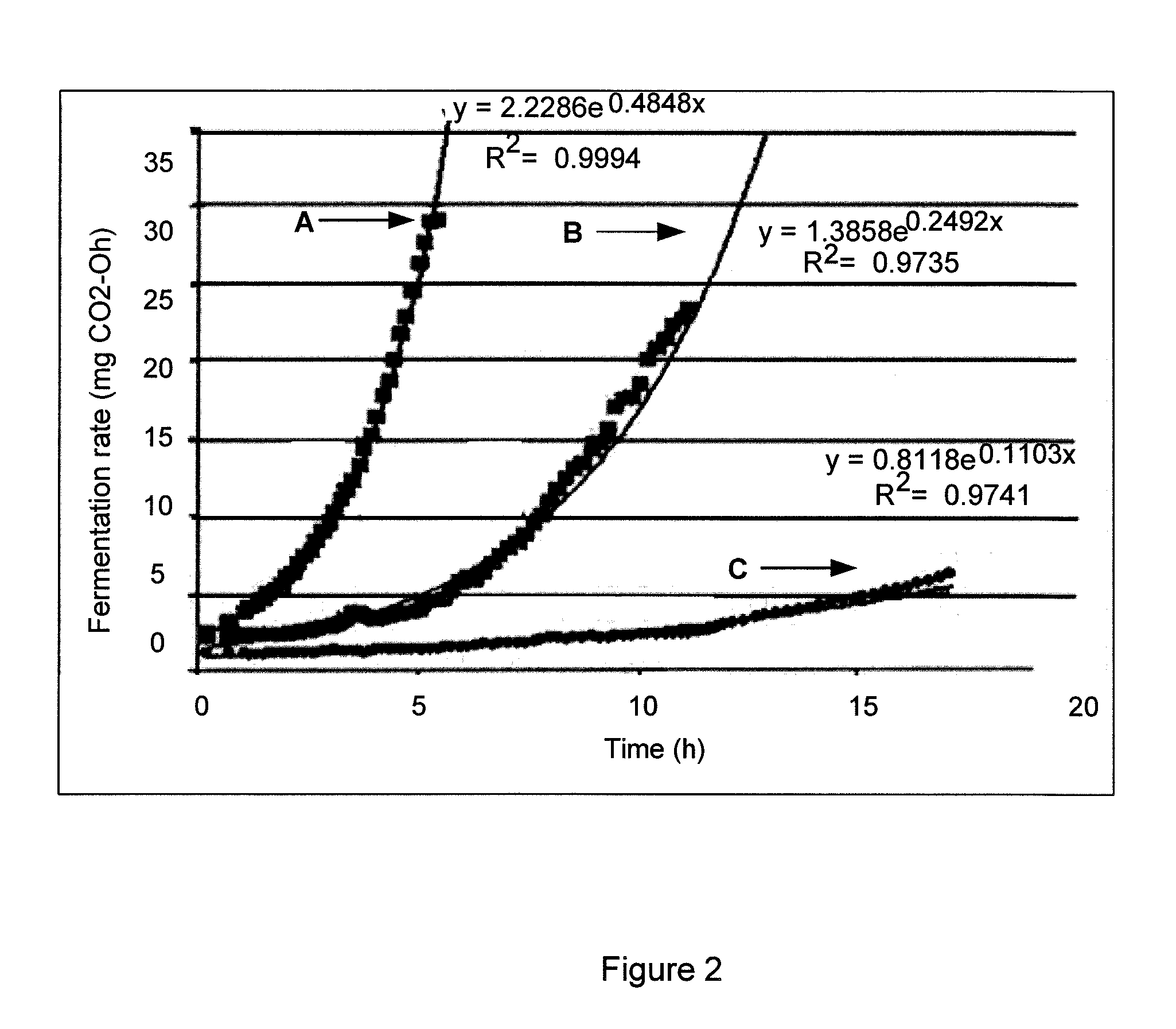Selection Of Cellulolytic Microbes With High Growth Rates
- Summary
- Abstract
- Description
- Claims
- Application Information
AI Technical Summary
Benefits of technology
Problems solved by technology
Method used
Image
Examples
example 1
Selection of a High Growth-Rate Strain
Materials and Methods
[0023]The strain Clostridium thermocellum (C. thermocellum) ATCC 27405 was used in the following examples. C. thermocellum is an anaerobic, thermophilic bacterium possessing cellulolytic and ethanogenic abilities that make it capable of directly converting a cellulosic substrate into ethanol.
[0024]C. thermocellum was maintained either in MTC medium with 3% Avicel, 3% cellobiose (Ozkan, Desai et al. 2001), or in a chemically-defined media (Johnson, Madia et al. 1981) modified as follows: cellobiose or cellulose, 10 g / L; KH2PO4, 4.25 g / L; (NH4)2SO4, 2.1 g / L; MgCl2.6H2O, 1.0 g / L; CaCl2.2H2O, 0.15 g / L; FeSO4.7H2O, 0.002 g / L; Na-citrate, 3.0 g / L; L-cysteine, 1.0 g / L; rasazurin, 0.002 g / L; trace elements and vitamins. Medium was prepared in an anaerobic chamber with an atmosphere of CO2 / N2 / H2 (10% / 85% / 5%).
[0025]Isolation of C. thermocellum was carried out by reactivating C. thermocellum from a frozen state in batch culture on MTC-...
PUM
 Login to View More
Login to View More Abstract
Description
Claims
Application Information
 Login to View More
Login to View More - R&D
- Intellectual Property
- Life Sciences
- Materials
- Tech Scout
- Unparalleled Data Quality
- Higher Quality Content
- 60% Fewer Hallucinations
Browse by: Latest US Patents, China's latest patents, Technical Efficacy Thesaurus, Application Domain, Technology Topic, Popular Technical Reports.
© 2025 PatSnap. All rights reserved.Legal|Privacy policy|Modern Slavery Act Transparency Statement|Sitemap|About US| Contact US: help@patsnap.com



